Three bolts light up the Central California foothills on either side of Highway 101. After each white flash of lightning, the next cluster strikes even closer. The torrential downpour makes it nearly impossible to see through my windshield. I should probably pull over to let the storm pass, but with only 50 miles of power left, I need to recharge my 2020 Tesla Model Y. The lightning knocked out nearby Buellton’s electricity, shutting down its Tesla Supercharger station. San Luis Obispo, where navigation tells me is the nearest charging station, is right at the end of that 50-mile range.
Considering I’m 250 miles from home, this test—to see how an electric car performs on a classic California surf trip—is not going as planned. I borrowed this Tesla loaner to see whether surfers can adopt emissions-free vehicles into their lifestyles as a means to combat climate change, and being thwarted by an extreme weather event is a bittersweet slice of irony that reminds me just how stark of an existential chokehold climate change has on California’s future.
In late August, a week of storms caused 12,000 lightning strikes and 585 fire ignitions, and resulted in the state’s second- and third-largest forest fires ever recorded. A changing climate has yielded crisis levels of more frequent and severe heat events, which in turn lead to drier vegetation, increasing the likelihood and speed of more wildfires.
One of many needed solutions is personal transportation that doesn’t rely on fossil fuels. Since the rise of the combustion engine, surfers, like many outdoor adventurers, have had a self-defeating reliance on fossil fuels—where chasing swell can contribute to the destruction of the natural playground on which we depend. If you’re not reaching waves by foot or bike, you’re probably doing so by car or plane, emitting greenhouse gases that are steadily ruining everything we love about the ocean.
“Greenhouse gases emitted from cars and planes are being absorbed by the marine environment, making the ocean more acidic,” says Pete Stauffer, environmental director at the Surfrider Foundation. “This change to ocean chemistry threatens the survival of a variety of marine species including corals, crabs and plankton. Climate change is also making the ocean warmer, causing sea level rise and the loss of beaches and surf breaks around the world.”
Unfortunately, the obstacles deterring American consumers from adopting EVs are real, many of them nonstarters for ocean people. For one, EVs are typically small, which means no room for boards and other gear. Range is another factor; a car that can’t be driven even 200 miles between charges isn’t going on a road trip. Charging infrastructure has been unreliable and in some places nonexistent, limiting destinations. And for renters and apartment dwellers, at-home charging is often impossible.
The good news: We are in the dawn of a new EV era. Larger, all-wheel-drive, long-range EVs are coming out, and the Model Y is one of the first. It has a range of 326 miles, more than enough for a round trip from San Diego to L.A. The Dual Motor system utilizes two independent electric motors to drive torque to the front and rear wheels, creating All Wheel Drive-equivalent functionality that can traverse snow, mud, and dirt. The back seats fold flat, opening up 68 cubic feet of cargo space, and with the rounded roof and hatchback door, I could fit coolers, clothes, camping equipment, and surf gear—no problem. Tesla makes a roof rack (although I suggest an aftermarket rack with wider crossbars), and offers a tow package capable up to 3,500 pounds.
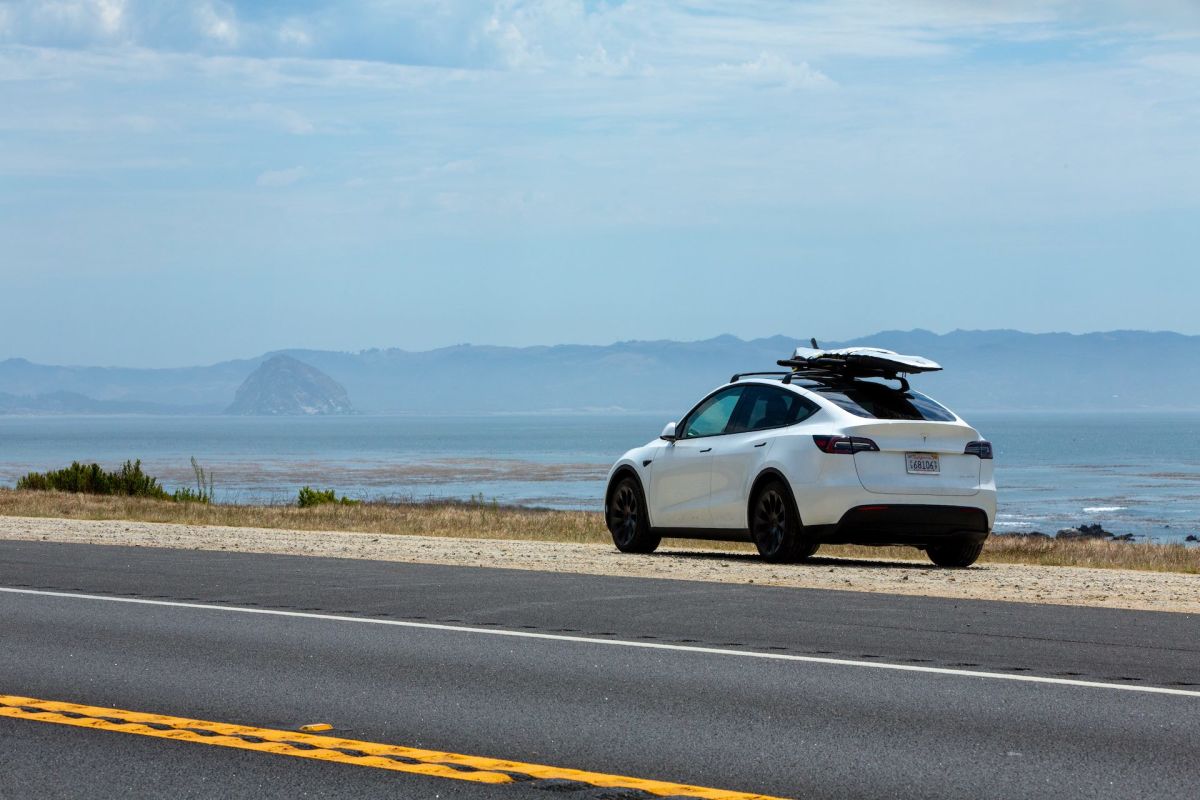
I drove from San Diego to Santa Cruz in the Model Y, with stops in Malibu, Ventura, Santa Barbara and Big Sur, traveling more than 1,000 miles. Thanks to Tesla’s ubiquitous charging stations, I never had a problem charging (minus the lightning storm outage). The car’s built-in 15-inch display with voice-activated navigation eliminates “range anxiety,” as it calculates whether you have enough battery to make it to your destination, and if you don’t, it navigates you to the closest charging station.
Tesla’s “Supercharger” stations will charge your car halfway in about 15 minutes, and up to 80 percent in about half an hour. I thought the adjustment from filling a gas tank in a couple minutes to charging a battery for as much as an hour would be difficult, but I quickly fell into a routine of strategically timing charging sessions to coincide with coffee breaks or grocery runs.
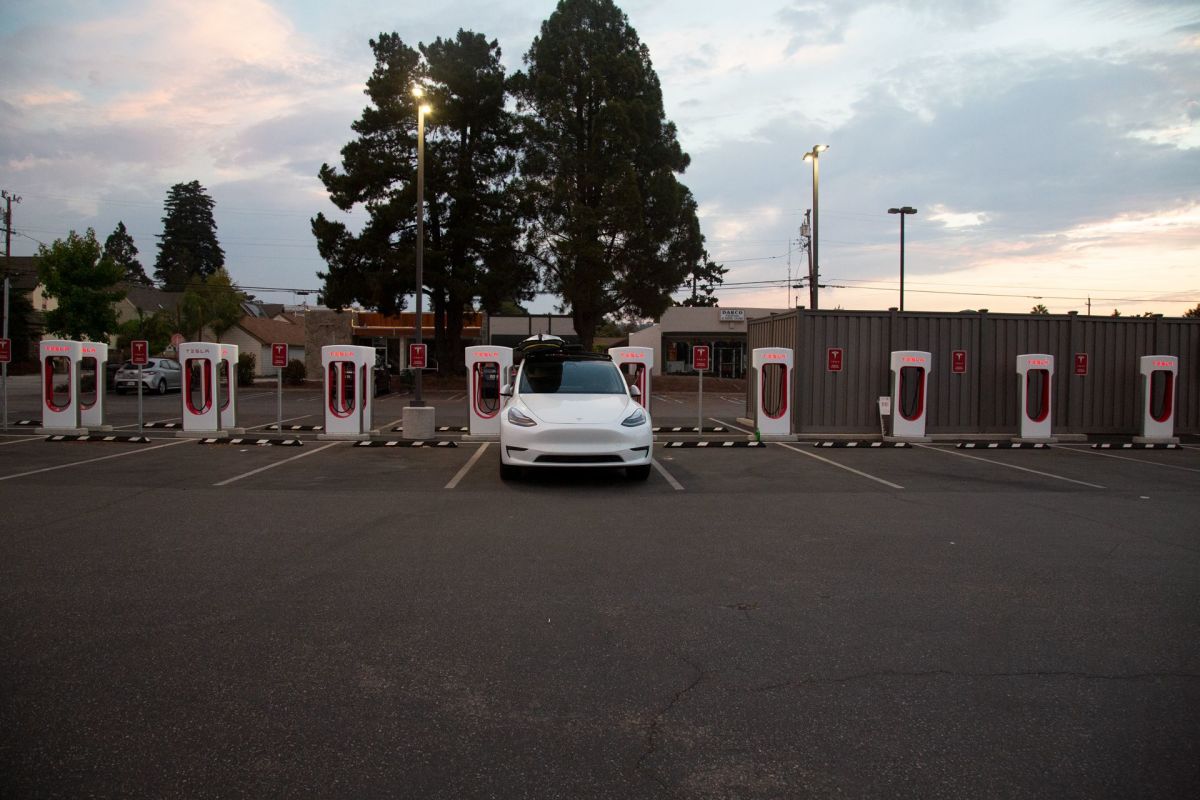
Admittedly, Tesla makes it especially easy to drive an EV long distances, since you can depend on the company’s own charging infrastructure, which is well maintained and strategically mapped out. When driving other EVs, I’ve had to rely on third-party charging stations, which all too often are broken or full. If a Tesla charging station is particularly busy, Tesla will regulate how long cars are allowed to charge, to cutdown wait times.
When I first drove the Y, I was skeptical of its surf-trip compatibility. It looked and felt like a luxury vehicle. If you’re used to turning locking hubs on your wheels to engage your 4WD, and your music selection is relegated to whatever cassette is in your tape player, getting into a Tesla feels like stepping onto a space station. You don’t turn a key or push a button to turn on the car—an app on your cell phone detects when you come and go, and even locks the car for you when you walk away from it.
But some of those over-the-top features actually come in handy on a road trip. For instance, “Dog” mode allows you to turn off, lock and leave your car with your pet inside, and to set climate controls from your cellphone to keep them comfortable while you’re buying more firewood or checking the waves.
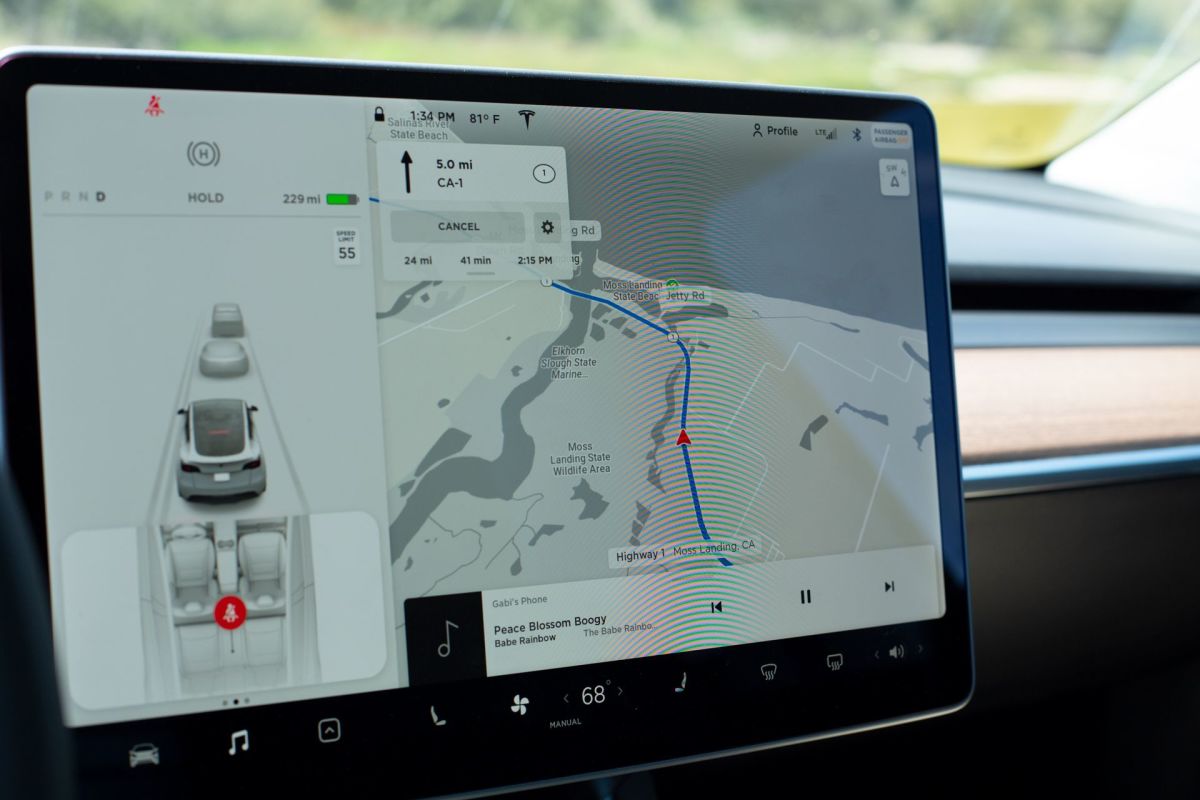
I grew to love the convenience of not carrying a key, and I may or may not have indulged in the “Caraoke” app while sitting in traffic, but what I loved most about driving this car across California was the deep satisfaction of knowing that traveling hundreds of miles was having a significantly lesser impact on the natural environment I set out to enjoy.
Now, let’s acknowledge the $50,000 elephant in the room. A long-range Tesla Model Y costs $49,990, before taxes. The Chevy Bolt, another all-electric hatchback (albeit without AWD), starts at $36,620. For most people, that’s a lot of money.
There are opportunities for savings, including federal tax incentives (as much as $7,500) and some state incentives for buying all electric vehicles. EVs also require a lot less maintenance (no oil changes, for starters), and depending what you drove previously, you could be spending less than half the money to charge an EV as you did to fill your gas-powered car.
Many surfers are already driving “adventure” cars that, despite their dusty and muddied appearance, are just as expensive if not more so than an EV. A Toyota Tacoma TRD Sport starts at $33,000, a 4Runner at $36,000, and let’s not forget how many brand new 4WD Sprinters (which start at $59,600) are parked in beach lots these days.
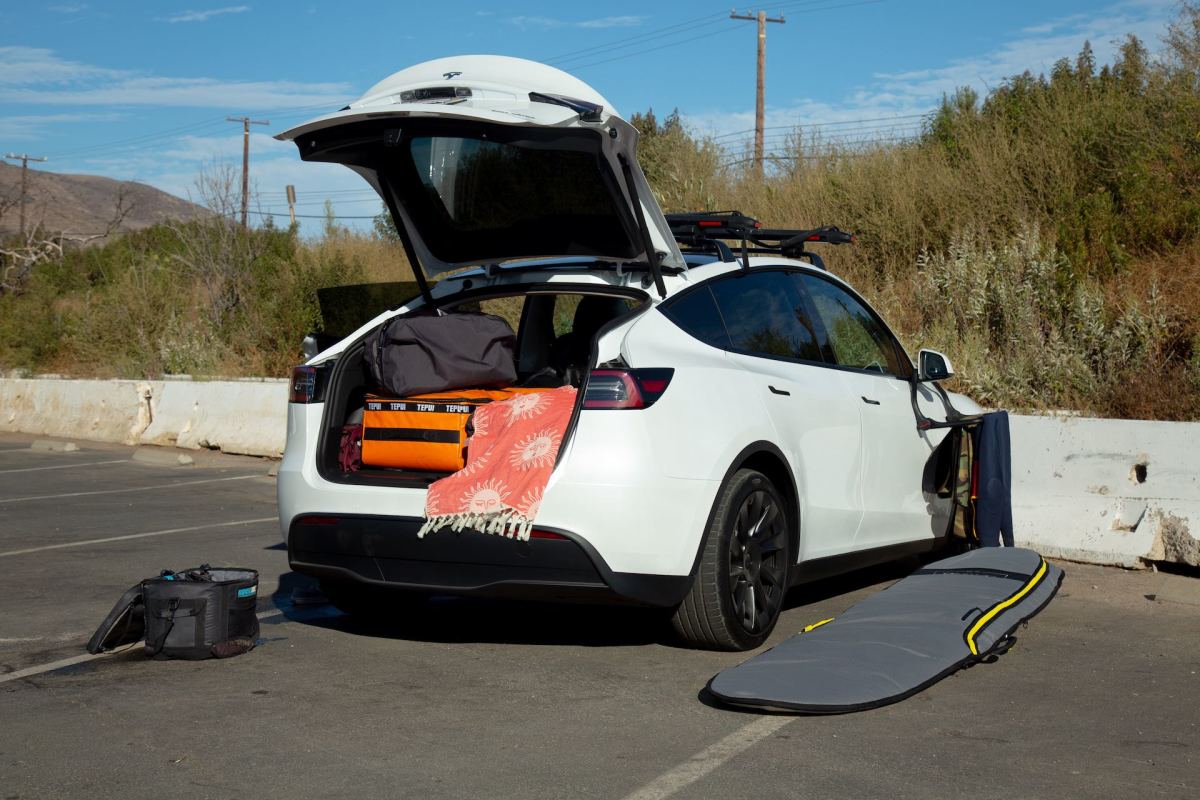
Sure, EVs can’t do everything that those cars can do. You can’t tow a jet-ski with most EVs, at least not without annihilating the battery’s range, nor could you comfortably sleep in most of them (I actually could have slept in the Model Y, though a second person would’ve been a squeeze).
But more often than not, the average surfer isn’t on some off-grid strike mission—they’re rushing to the beach to squeeze in a session before taking their kids to school, or grabbing a couple waves as the sun sets after work.
And soon, we will all have a lot more choice when it comes to EVs. Ford is releasing an electric SUV by the end of the year, and GM is promising 20 more EV models by 2023. Rivian will release their adventure-focused albeit pricey R1T pick-up truck and R1S SUV in 2021.
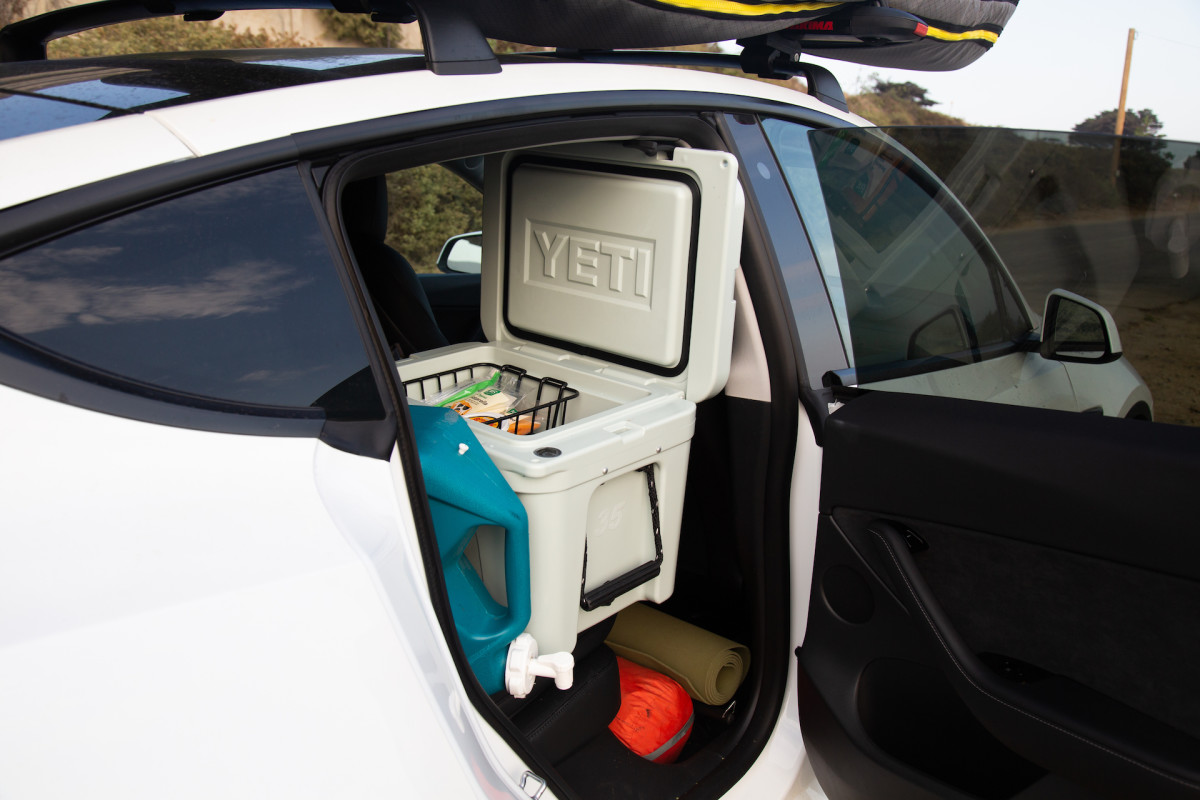
EVs will also soon become affordable. The cost of battery packs, which are what make EVs more expensive, has dropped 80 percent since 2008, and continues to improve. (Elon Musk recently announced that Tesla will sell a $25,000 car within three years, although without details on how.)
Currently, however, EV adoption in the United States is woefully lacking. Battery-powered cars only account for two percent of new-car sales in the United States. Last year, twice as many SUVs as sedans sold in the U.S., and that statistic doesn’t even include pickup trucks. By buying these types of vehicles, consumers aren’t indicating much interest in the EV category, and so car manufacturers don’t want to make more EV options, seeing them as a bad investment. Then, consumers complain there aren’t the types of EVs that fit their needs or budgets, continue not to buy them, and the cycle continues.
If industry and consumers are pointing figures at one another for slow EV adoption, government regulation might push both sides forward: California Governor Gavin Newsom just issued an executive order declaring a new state goal that by 2035, 100 percent of new car sales in the state will be zero-emission vehicles.
Americans overall drove 3.22 trillion miles in 2018, and 28 percent of U.S. emissions come from transportation, the majority of that from passenger vehicles. Without electric vehicles, America’s obsession with driving will continue to have catastrophic consequences for the climate.
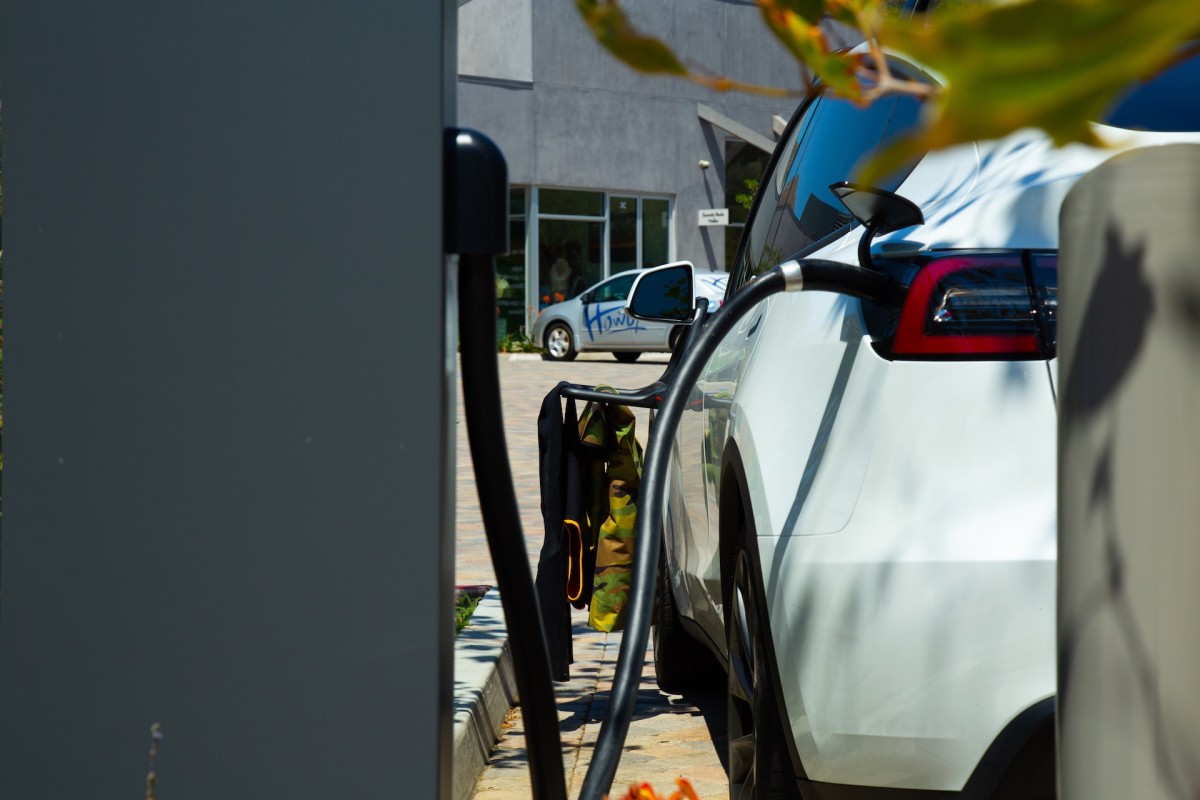
Surfers aren’t immune either. With an estimated 2.3 million surfers over the age of 18 in the country today, and based on 2011 data on how often and how far surfers drive to the ocean, American surfers might be driving as many as 4.5 billion collective miles a year to ride waves. That equates to about 2 million metric tons of CO2 released into the atmosphere.
If surfers want to preserve the viability and purity of the waves they ride, they’ll have to mitigate this impact, and quickly. Electric vehicles can play a crucial part, by eliminating tailpipe emissions. Skeptics point out that most EVs are still charged with electricity derived from fossil fuels, but a recent study found that even with the current mix of global energy sources, EVs entire lifecycle still causes fewer emissions than gas-powered cars in 95 percent of the world. And since renewable energy is estimated to be cheaper than even natural gas by 2025, the day when EVs can truly be emissions-free is rapidly approaching.
As surfers, our way of life is at particular risk, since global warming and pollution will destroy the ocean as we currently know it. It may feel as though changing our transportation habits threatens our lifestyle, by forcing us to drive smaller cars, travel shorter distances, or invest our money in ways we’re not used to, but none of these sacrifices outweigh the one we will be forced to make if sea levels rise, sea life becomes extinct, and reefs die.
On my way home from Santa Cruz, I took the Model Y to one last stop: San Onofre State Beach. It’s where surfers have vociferously fought against the now-defunct San Onofre Nuclear Plant, the stored nuclear waste of which threatens some of the most treasured surf breaks in Southern California.
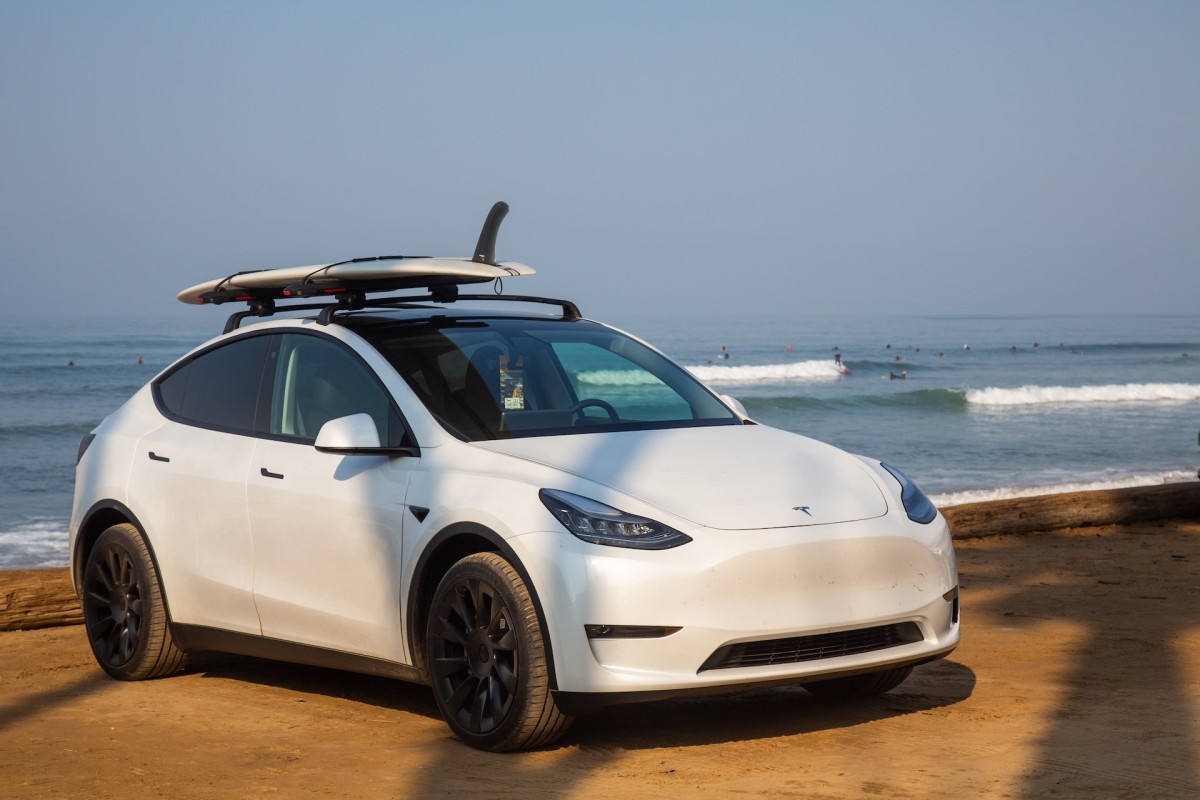
It was one of those summer mornings when the line is so long that it wraps into a U-shape behind the park ranger’s kiosk, and cars idle for as long as an hour waiting to get into the parking lot. I cringed at the unwanted attention the Model Y was attracting—a glistening pearl of opulence in a sea of vintage trucks and rusty vans.
In this brand new car, I felt like I had betrayed the covenant of anti-material bohemianism I had agreed upon as a surfer. I envied those driving a rusty oversized vehicle they could sleep in or take deep into Baja for weeks on end. What we drive is often another form of expression, and those cars expressed adventure and freedom.
But as we all waited in line in the perfect Southern California weather above the glistening Pacific Ocean, each gas- or diesel-powered car, van, and truck slowly exhaled the greenhouse gases that could one day make blissful days like these extinct. Meanwhile, EVs like the Model Y are making strides in silence, not yet the obvious choice for adventure, but promising its future.
from Men's Journal https://ift.tt/384sgfv
via IFTTT








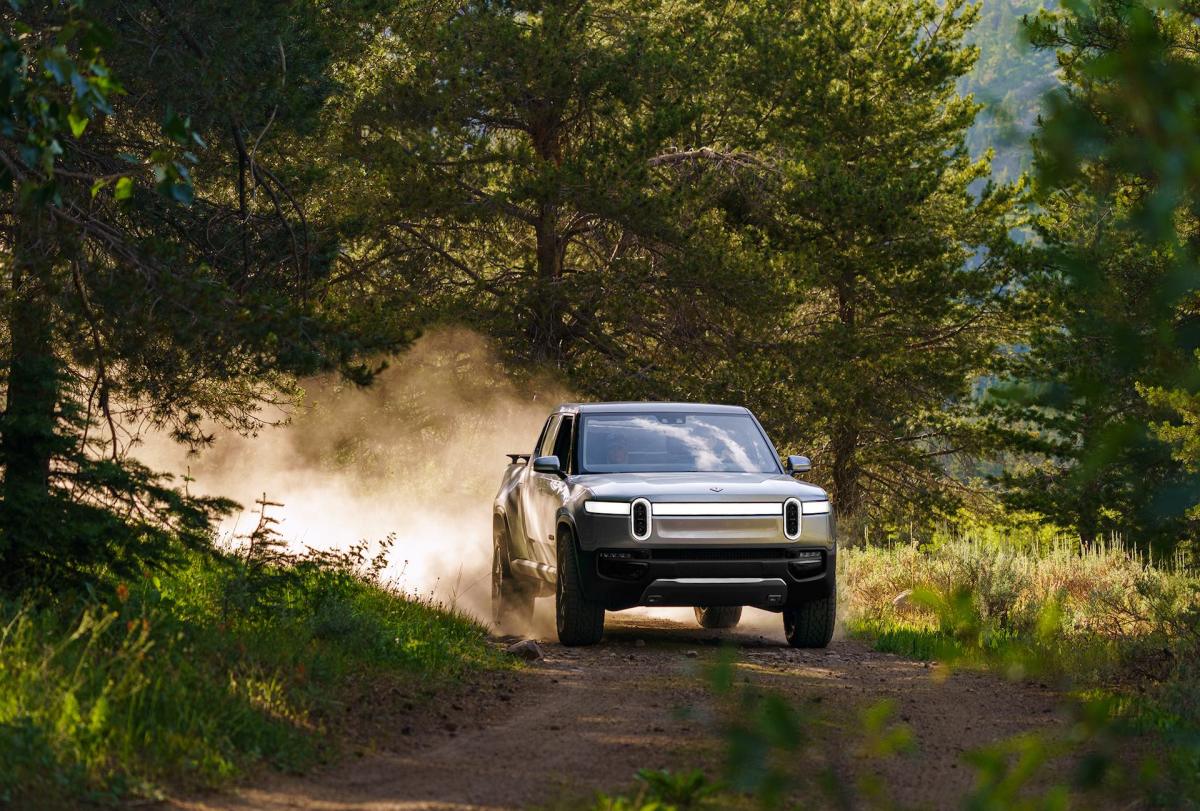


0 comments:
Post a Comment